The Seasons:
A Symphony with no Intermissions
One of the frequent whines heard around South Florida is that there are no seasons (Miss the snow and ice? May I offer a suggestion!) What a waste of your anger quotient when there are real problems to keep you fuming! Just as a sampler: corrupt and/or incompetent politician and public officials, an education system that is a money trough for many of these creeps and does little for the student, lack of public transport, a build-and-damn-the future mentality that is despoiling the state - well, you get the idea. Still want to come to Florida?
Back to my garden.
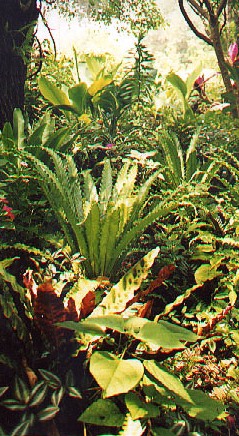
in Lakeland, Florida
There is indeed a lack of the hard-to-miss freezes that make it easy to mark the passage of another year in more temperate areas. (I remember reading once that "intemperate" would be a better name to apply to the middle latitudes.) We also escape the extreme seasonality due to marked dry and wet seasons that more tropical areas may experience, although it is actually rainfall that really sets our times of strong plant growth, with temperature changes and cloudcover or clear skies as supporting characters in the action.
 |
There is no denying that we do get year-round growth on many plants, including many from the rainforest, where temperatures vary more during a typical day than the daily average does through the year. Most subtropical plants, though, are quite sensitive to lower temperatures and slow down through the cold months. Some time in February or March, everything seems poised for new growth, and when the rains pick up in April or May there is a sudden surge, particularly since the rains at this season come as showers, leaving the skies clear between-times so that the plants can pick up plenty of energy from the sun to support the new growth. |
|
Turn your back on a pothos (Epipremnum)
and you can lose a tree! |
Some of the gingers are early arrivals. The leaves of kaempferias push up through the mulch, curled up lengthwise, opening to display the iridescent colors that will dull as the summer goes on.
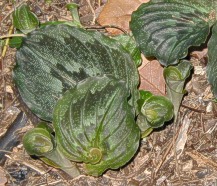 
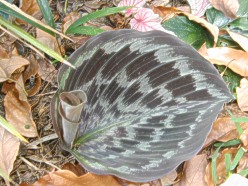 |
|||
|
Kaempferia pulchra 'Mansonii'
(4-6" leaf)
|
Kaempferia hybrid (6-8" leaf)
|
Kaempferia 'Alva' (8-10"leaf)
|
|
Then at Easter time, on Easter Sunday if the Puerto Rican legend of this "resurrection lily" is to be believed, the first flowers of Kaempferia rotunda appear, soon to be followed by the upright, spear-shaped leaves.
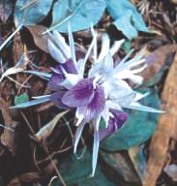
|
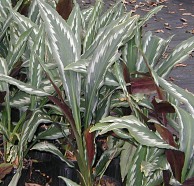 |
Obviously the species epithet does not come from the shape of the leaf: this species is one of only a few kaempferias that does not have a more or less 'rotund' leaf. The leaves are striking, though, dark red-green below with an iridescent grey-green upper surface, and often feathering of silvery or dark shades. |
|
Kaempferia rotunda flowers
|
Leaves of the cultivar 'Raven'
|
| A little off
the edge of one of the light areas, Justicia spicigera is in
full bloom. |
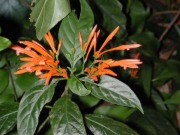 |
|
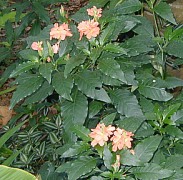 |
|
|
| Hippeastrums (amaryllis) have just finished their display by the time the rains begin. There are two or three colour forms that have been in gardens in Florida "for ever," and flower without fail. |
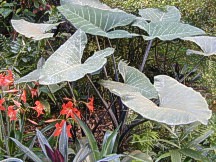 |
|
Amaryllis brighten an area under
purple
elephant ears (Xanthosoma violacea) |
They are true granny plants, passed on from garden to garden and seem to have no need for the dry, rest period that is essential for success with the more highly bred forms that we force for winter flowering in the house.
On for a few months
Back to beginning of the garden story